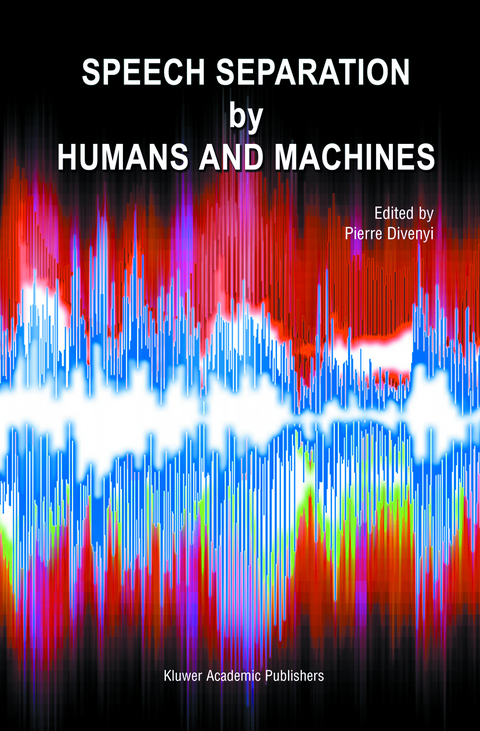
Speech Separation by Humans and Machines
Springer-Verlag New York Inc.
978-1-4020-8001-2 (ISBN)
Speech Segregation: Problems and Perspectives.- Auditory Scene Analysis.- Speech separation.- Recurrent Timing Nets for F0-based Speaker Separation.- Blind Source Separation Using Graphical Models.- Speech Recognizer Based Maximum Likelihood Beamforming.- Exploiting Redundancy to Construct Listening Systems.- Automatic Speech Processing by Inference in Generative Models.- Signal Separation Motivated by Human Auditory Perception: Applications to Automatic Speech Recognition.- Speech Segregation Using an Event-synchronous Auditory Image and STRAIGHT.- Underlying Principles of a High-quality Speech Manipulation System STRAIGHT and Its Application to Speech Segregation.- On Ideal Binary Mask As the Computational Goal of Auditory Scene Analysis.- The History and Future of CASA.- Techniques for Robust Speech Recognition in Noisy and Reverberant Conditions.- Source Separation, Localization, and Comprehension in Humans, Machines, and Human-machine Systems.- The Cancellation Principle in Acoustic Scene Analysis.- Informational and Energetic Masking Effects in Multitalker Speech Perception.- Masking the Feature Information In Multi-stream Speech-analogue Displays.- Interplay Between Visual and Audio Scene Analysis.- Evaluating Speech Separation Systems.- Making Sense of Everyday Speech: a Glimpsing Account.
| Erscheint lt. Verlag | 2.11.2004 |
|---|---|
| Zusatzinfo | XXIV, 319 p. |
| Verlagsort | New York, NY |
| Sprache | englisch |
| Maße | 155 x 235 mm |
| Themenwelt | Geisteswissenschaften ► Psychologie ► Biopsychologie / Neurowissenschaften |
| Technik ► Elektrotechnik / Energietechnik | |
| ISBN-10 | 1-4020-8001-8 / 1402080018 |
| ISBN-13 | 978-1-4020-8001-2 / 9781402080012 |
| Zustand | Neuware |
| Haben Sie eine Frage zum Produkt? |
aus dem Bereich


